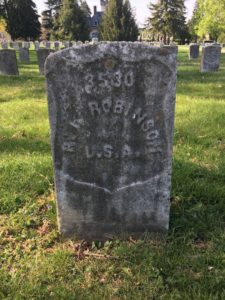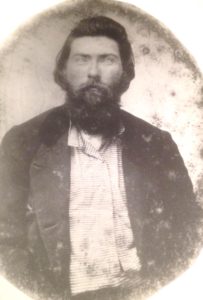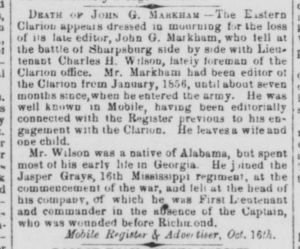Spring Symposium weekend at Sharpsburg
27 April 2023
I made my semi-annual pilgrimage to Sharpsburg last week, focused on the Antietam Institute‘s Spring Symposium. For much more about the 2023 Symposium itself, look for Facebook and other social media posts from the Institute and some of my fellow attendees.
I had some time while in the area, also, to get to the Antietam National Cemetery to find one of my guys, and to roam the Antietam battlefield to visit a few cannon.
Thomas H. Green (c. 1870)
16 April 2023
Private Thomas Henry Green of the 16th Mississippi Infantry survived a chest wound at Sharpsburg in 1862 and returned to duty to serve to the surrender at Appomattox Court House in 1865.
Here he is somewhat post-war from a photograph contributed to the FamilySearch database [free membership required] by Katherine L Brister.
Death of John G Markham (1862)
15 April 2023
From the Augusta, GA Weekly Constitutionalist of 22 October 1862, online from Georgia Historic Newspapers:
John Garland Markham was 5th Sergeant of Company F, 16th Mississippi Infantry when he was killed at Sharpsburg.
First Lieutenant Charles Henry Wilson of Company F was thought to have been killed there also, but was wounded and captured, losing his leg to amputation. He survived the ordeal and resigned his commission in May 1863.



